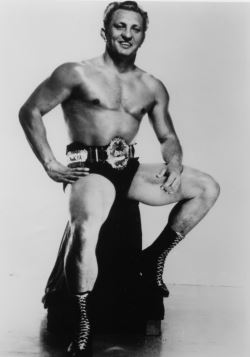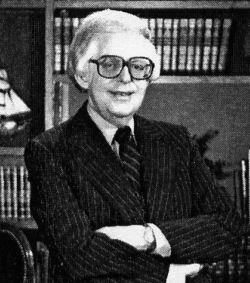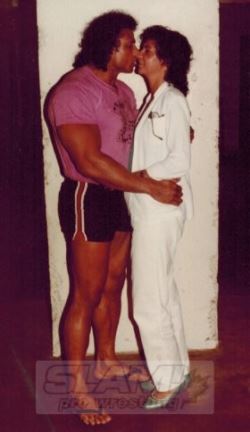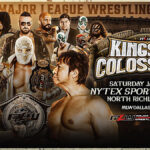Thirty years ago, Ray Tennenbaum wrote a book that could have reshaped the way people understand professional wrestling. Instead, he tells me, “[it] kind of broke my heart.”
Tennenbaum was a 20-something ex-cub reporter for Newsday and living in New York when he first started asking questions about wrestling; where had it come from, how did it work, and who were the people who made the whole show run? It was 1984 and answers were not easy to come by. Wrestling was still very much a closed business and getting close to anyone involved in it was an insider’s game. Tennenbaum absolutely was not one.
What he did have going in his favor was an assignment from The New Yorker. The magazine’s name opened doors, and Tennenbaum walked through everyone he could find on an 18-month journey digging for truths in the most baldly staged of sports. He chased down interviews with wrestling promoters, retired wrestlers, journalists, and media figures. He met Muhammad Ali backstage at WrestleMania. He spent weeks digging up newspaper articles and texts from the archives of the New York Public Library. He interviewed a young Vince McMahon in his Connecticut office and was thrown out after a single question.

Ray Tennenbaum.
The resulting work, Sleeperhold: How Professional Wrestling Worked Its Magic, was at least 15 years ahead of its time. It laid wrestling bare from the inside out; the promotional battles that defined wrestling at the turn of the century, the techniques used by promoters to attract fans, and how cards and individual matches were arranged and performed for maximum effect. And in his writing, he sidestepped the impulse, desperately indulged by so many other writers, to place themselves outside of wrestling’s sweat-soaked throng. That a person would spend their evening at a wrestling match was understood without derision. That someone might find it enjoyable, even thrilling, was never taken as surprising.
He approached wrestling with an honest appreciation and his measured respect is written right into Sleeperhold‘s subtitle. The end product of the work that went into making wrestling run wasn’t entertainment for suckers; it was magic.
Rock critic Richard Meltzer once described wrestling as “uniquely fake, archetypally fake, paradigmatically fake for real,” and he was exactly right. Tennenbaum’s intent with Sleeperhold was never to expose wrestling; he understood right away that there was nothing really to expose. He took for granted that spending his time exploring whether wrestling was real or fake was a red herring. It was the question that every almost every reporter couldn’t resist tangling themselves up in. Attempting to answer it was like trying to define a word with the same word. What he concerned himself with, instead, were the questions of real interest, like the one posed by Village Voice writer Dan Bischoff in an article referenced in Sleeperhold; “The real question about wrestling isn’t ‘Is it fake?’ but ‘Is it art?'” “The philosophy of [Sleeperhold],” Tennenbaum says, “wasn’t how fake wrestling is. It was how real wrestling is.”
* * * * *
Sleeperhold began as a pitch to New Yorker editor Tony Gibbs. “I went in and talked to him,” remembers Tennenbaum, “and my heart is in my mouth because I’m in the office of The New Yorker. He said, ‘We don’t have any jobs but if you want to write about something…’ And practically off the top of my head, I said, ‘Wrestling,’ because it was 1984 and wrestling was suddenly huge. And he nodded and sounded interested. And that was the beginning. It was just off the top of my head. I’ve never pitched anything faster.”It was a risky pitch that could have ended with him being laughed out of the room. It didn’t, and Tennenbaum set to work with no guarantee that either the piece would be published or that he would be paid for his work, should it not be accepted. “If you write this and we don’t take it,” he remembers being told, “you don’t get your expenses and you don’t get a kill fee. It’s as simple as that.”
Tennenbaum was fortunate that early on he gained the trust of journalist Dave Meltzer. Through his Wrestling Observer newsletter, Meltzer was the connecting element for a network of fans that would come to describe themselves as “smart;” they happily looked through wrestling’s tricks and misdirections and relished understanding its behind-the-curtain maneuverings. “I was very blessed that [Meltzer] didn’t mind talking to me because I talked to him nearly every day for quite some time,” Tennenbaum says. “I think he’d seen so much idiotic coverage…he really thought it was a chance for a mainstream publication to get it right.” Meltzer recommended leads, was a sounding board for ideas, and helped to validate the history Tennenbaum was tracking down. “He was so valuable because he knew so much and could have these intelligent conversations. And when he paused to think and consider and then came back at you with a response, you knew it was really intelligent, well thought-out. I wanted to get at the truth and he understood that.”
To promoters and performers, journalists were outsiders and the notion of protecting wrestling’s secrets was still the sport’s unwritten rule. “I’d ask a promoter a question,” Philadelphia Daily News sportswriter Ray Didinger told Tennenbaum in an interview for Sleeperhold, “and he’d go on and on about something that didn’t really have anything to do with what I’d asked. And I began wondering, ‘Why don’t I get any straight answers?,’ and then I realized, ‘I’m dealing with a whole business that’s a lie.'” “Everyone lies to you,” Sports Illustrated‘s Bruce Newman told him. “After a while, you start to get the feeling that it’s all a joke, and you’re the butt of it.”
Promoters relied on the press for a certain amount of publicity, but asking questions that were too detailed was a sure way to get your access to the promotion cut off, or worse. In December of 1984, 20/20 reporter John Stossel was struck in the head by wrestler “Dr. D” David Schultz after asserting that wrestling was fake. Weeks later, Hulk Hogan injured talk show host Richard Belzer while demonstrating a front chin lock on him. The hold knocked Belzer unconscious, and when Hogan released him from it, he let his limp body drop to the ground. It’s gruesome footage to watch, and when Belzer smacked his head hard against the studio floor, the entire audience seemed to instantly know something was wrong. “He’ll be alright,” joked an audibly nervous Mr. T, who was appearing along with Hogan. When Hogan leaned over to help Belzer off the ground, he smacked him teasingly on each side of the face and joked, “See; it works.”
* * * * *
Tennenbaum approached it all with a sense of fascination and a loving curiosity, paired with a sophistication of style and thought that was missing from the other major pieces on wrestling being published. “[The New Yorker‘s] got a great journalistic tradition,” Tennenbaum says, “and whatever else I did, I had to make sure that the research and the facts were airtight. I felt like once I did that, I could kind of be a clever writer about it and lay out all the facts but with this vaguely ironic attitude underneath the whole thing, because I thought that the story could bear that.” Bruno Sammartino, he wrote, projected “a sturdy, blameless virility.” Hulk Hogan, he wrote, was like “an eight-year-old child’s ideal Pop, late from work, who has come home to find that someone has been picking on his children, and trying to confuse them.”
Writing for one of the most respected magazines in the country helped Tennenbaum with getting his phone calls answered, and his credentials helped him build a remarkable list of sources, including promoters Sam Muchnick, Paul Boesch, Verne Gagne, Fritz Von Erich, and Bill Watts. “I would talk to Watts once a week, and he had so much personality,” he remembers. “Without breaking character, without giving away secrets, he would find a way to be semi-honest with me.”
If it seems far-fetched to imagine The New Yorker being interested in pro wrestling, it’s worth nothing the magazine ran several pieces on wrestling between the 1930s and ’50s. The magazine took wrestling seriously enough, that in 1931 Morris Markey could write, “My personal notion, after a season of mild excitement at the ringside, is that the struggle for the main matches at least is quite an honest thing.” During the height of Jim Londos’s fame in 1932, the magazine ran a lengthy profile of the then-champion, and in July of 1934, Alva Johnston’s remarkable three-part series on wrestling and boxing promoter Jack Curley, “Cauliflowers and Pachyderms,” was published. One of the magazine’s best-known writers, A.J. Liebling, covered wrestling twice; first with his 1939 piece on promoter Jack Pfefer, “Pull His Whiskers!” and again in 1954, with his lengthy, “From Sarah Bernhardt to Yukon Erik.”
In Sleeperhold, Tennenbaum wrote that, “since clinching the outcomes of wagered contests may itself be the world’s fifth or sixth oldest profession, professional wrestling’s historical authenticity is nearly impossible to document.” He tried anyway. With little to go on, he leaned heavily on newspaperman Marcus Griffin’s tell-all, Fall Guys: The Barnums of Bounce. Published in 1937, in some ways Griffin’s book has become the Velvet Underground & Nico of wrestling books. In 1985, few people had read it but everyone who had went on to perform much deeper research into wrestling’s past. It’s a near miracle Tennenbaum uncovered the book, at all. Though easier to find now with the Internet, Fall Guys was inaccessible to fans in the 1980s. A decade after Tennenbaum was able to track a copy down in the endless stacks of the New York Public Library, Fall Guys was still difficult enough to get a hold of that photocopied versions of the book were being sold and traded among newsletter subscribers.
He used the history he was gathering to organize Sleeperhold into sections that bounce between the present, a night of matches at Madison Square Garden, and the sometimes distant, sometimes near, past. He gave the book a scope that stretched almost 100 years, reviving musty, long forgotten characters like Curley, Pfefer, Frank Gotch, Billy Sandow, and Kola Kwariani. It was a challenge, because while football and baseball have crafted mythic histories for themselves, the people behind pro wrestling uniformly kept the sport’s background murky. And the wrestling most people were consuming in the mid-’80s, Vince McMahon’s World Wrestling Federation, was presented as a purely contemporary phenomenon, free of any discernible past. “I knew that [Sleeperhold] was going to be fun and have great interviews but I didn’t think it would be that hard to make it anything but this stupid thing that Time and, to a lesser degree Sports Illustrated and the Wall Street Journal, were doing,” says Tennenbaum. “And to maybe try to get at what it really was instead of simply promoting what McMahon wanted it to be perceived as.”
For his understanding of how matchmakers and wrestlers build excitement, both over the course of a wrestling card as well as during the length of a match, Tennenbaum relied on wrestler and promoter Roy Shire and former world champion Buddy Rogers. “[Shire] was really big and entertaining,” remembers Tennenbaum. “He had a certain kind of wisdom. And I want to say he did his best not to bullshit me.” “See,” Shire told him, “your main event is like having sex with a girl, okay? A lot of it is because wrestlers could always understand sex when I told ’em, ‘It’s like having an orgasm in sex.'”

The one and only “Nature Boy” Buddy Rogers.
Rogers, a peerless sufferer as a wrestler, also comes off as larger than life. He has Tennenbaum call him from a pay phone near the now-demolished Garden State Racetrack in New Jersey. Rogers then appears in the parking lot, Tennenbaum wrote, “smoking a cigar at the helm of a spotless black Lincoln Continental. Rogers’s six-foot, four-inch body is still massively well-proportioned, and seems too big even for the luxury car; but his dictionary-sized hands are graced with a manicure — as well as, on one pinky, a huge gold ring, scattered with diamonds, like chocolate chips in a cookie.” “Buddy Rogers was just so entertaining I would print his lies to the day I die,” Tennenbaum says. “I thought he was so crotchety and battle scarred and had such a great voice. He was delightful to talk to.”
Sleeperhold is filled with invaluable first-hand stories and memories. New York Times writer Gordon White recounted a 1957 riot at Madison Square Garden; “I’ve covered riots in other sporting events other than that,” he told Tennenbaum. “That was the worst situation I was ever in, because, had we not gotten the hell out of there, we could have been very seriously hurt. Those big wooden chairs were flying towards the ring.” Roy Shire told Tennenbaum about his memories of wrestling in New York in the 1950s and of starting his San Francisco promotion a decade later; “I walked into the Cow Palace and everybody says, ‘Aw shit, he ain’t gonna draw’… I said, ‘What’s the place seat?’ He says, ‘16,000.’ I says, ‘We’ll fill it.’ He laughed at me, says: ‘Not wrestling.’ We came in, we didn’t draw 16,000 — we drew something like 17,000. We turned 6, 7,000 away from the doors. They were scalping tickets for 50 dollars outside — this is back in ’60, friend.”
Worth noting is that the piece does not quote a single active wrestler by name and that Tennenbaum did not seek out interviews with any. “I never expected a wrestler to tell me the truth,” he says. “I expected them to begin to entice me with something and then run to [Vince McMahon] and say, ‘I’m about to spill the beans to this twerp from The New Yorker.’ Because they were smart enough to know that it really wasn’t going to benefit them to talk to me. The most substantial benefit they could get from it was pretending they might talk to me and then running to Vince, or somebody, and saying, ‘Listen, you better get me a little bit of money or I’m going to open my mouth.'”
* * * * *
Tennenbaum’s work soon led to a one-on-one interview with Vince McMahon, himself. He made the hour trip up I-95 from Manhattan to the WWF headquarters, then located in Greenwich, CT, to meet with the burgeoning mogul. When he arrived, he was surprised to be greeted, albeit warily, by wrestling promoter Jim Barnett. Barnett was a long-time power player in Detroit, Australia, and most recently, Georgia. His presence in WWF headquarters was a clear signal of McMahon’s growing power across the country. “[Barnett] was sort of like, ‘Why would The New Yorker do anything favorable about professional wrestling?’ And I said, relatively truthfully, that I’d been a long-time wrestling fan and that I was fascinated with it. I wasn’t going to pretend that I was going to do the same puff thing that everyone else was doing, [but] it was never going to be a hatchet job.”

Jim Barnett.
On the day of the interview, McMahon was puffed-up and only weeks removed from the initial WrestleMania, the biggest success of his young career. Tennenbaum vividly remembers him as overly eager to please and slightly off-putting in his need to show-off. After exchanging pleasantries, Tennenbaum opened the formal interview with a question about former promoter Joe “Toots” Mondt. “I had this hunch there was something shady about the way [McMahon’s] dad got the New York promotion from Mondt,” Tennenbaum says. “[McMahon] thought about it for a minute and he said, ‘I think this interview is over.’ And I was completely flabbergasted.”
That an independent, serious-minded, on-the-record interview with Vince McMahon was called off after a single question is an incalculable loss for wrestling history. One is only left to wonder at what kind of information an unguarded McMahon might have let fall. “I didn’t think it was unfriendly to ask him about Toots Mondt,” Tennenbaum says. “It was the guy his father started the business with. I’d think that Vince, as smart as he is, even if there’d been terrible blood between his father and Mondt, you know, that he could have figured out a way in the time he was sitting with me to frame some kind of narrative, even if it was made up … I don’t know if he saw something in my facial expression, or maybe he took it that I was condescending to him. It was likelier he was reacting to some snotty little ‘so and so’ from the pointy-headed New Yorker, more than anything else.”
The exchange with McMahon isn’t discussed in Sleeperhold, and it didn’t deter Tennenbaum’s work. As he progressed, he began poking at the stories on wrestling’s darker edge. These stories helped shape his approach to what was to have been the book’s final section. He included references in Sleeperhold to the death of Nancy Argentino and the questions that surrounded wrestler Jimmy Snuka’s possible role in it. In his research, he also was hearing repeated inferences to the growing presence in wrestling of steroids, painkillers, and other drugs. Most significantly, he interviewed Lisa McGraw, the widow of wrestler “Quickdraw” Rick McGraw. Tennenbaum remembers her as being “furious,” and “talking in excruciating detail about the affect [drugs] were having on him.” McGraw died in 1985 at the age of 30 from a heart attack, and the extent to which drugs contributed to his early death has remained an open question. To many, McGraw is seen as a bellwether for the string of deaths that would consume wrestling in the years to come.

Jimmy Snuka kisses Nancy Argentino.
“That last part [of Sleeperhold] was really going to be about the wrestler’s lives,” he says. “I really wanted to focus on the wrestlers as performers and the struggle to get ahead… That in some way what makes it real is there is no objective winning or losing, it’s just about impressing the boss. It’s like you and me at our job saying, ‘God damn it, I’ve been doing such a great job for 10 years and I still haven’t gotten promoted.’ That’s how real wrestling is. You can show up for work and take the greatest bumps of all time, and that’s your job. Unless you find a way to break out of it, you’ll be a glorified job boy. That’s really what I wanted to get, just how it felt to get stuck there and how guys found a way out.”
Being successful in wrestling meant taking the illusions as far as they needed to be taken to keep them vivid in the minds of fans. Wrestlers often kept the truth of their work from their families and friends and what this lack of separation meant for them can never really be understood. The line between the act and the real life is something that no writer has come closer to touching on than Tennenbaum.
“I had a great acting teacher once who would say, ‘Know the difference,'” he says. “When you’re in a play, no matter how indulgent you are, especially if it’s a run of more than two days, you kind of become that character. And you have to be very careful. She would say, ‘Get off the stage and be off the stage.’ Wrestlers don’t have that. And in some way, if there was going to be anything cautionary about that last section it was going to be the toll that it takes.”
Tennenbaum was submitting his work to The New Yorker throughout his research and received ongoing encouragement to continue. It was only before he began his writing for the final section that the magazine’s editors called the project off. He never got a firm reason for the rejection; did the editors finally decide that wrestling was just too lowbrow? Did someone with a business interest in the expanding WWF make a phone call to have the piece squashed? Was a story that included sections on wrestlers dying from suspected drug overdoses ultimately too risky to run? Or, was it that his sources, promoters and retired wrestlers, were ultimately seen as too unreliable? Having his piece rejected by a magazine he’d loved since he was a child left him heartbroken.
He next pitched the project as a book, but was unsuccessful in finding a publisher. “[They] came back time and time again,” he remembers, “‘Wrestling fans don’t read. And the ones that read don’t want to read your book.’ Which I thought was bullshit.”
“The wrestling world wasn’t ready for [Sleeperhold],” says Dave Meltzer. “I think there was still this stigma. In that same timeframe, I was looking at writing a book on wrestling, and the whole thing was, ‘Wrestling fans can’t read.’ It was like that was a given. So why would any book publisher ever want to do a book on wrestling?”Tennenbaum left the manuscript unfinished and turned to other work. Sleeperhold, the book he spent almost two years working on, now sits on his website, unheralded and waiting for tuned-in researchers to stumble upon it. His work from 35 years ago, including notes and audio recordings made with key figures in wrestling’s past, sits packed away in a storage unit in upstate New York. One’s brain goes fuzzy imagining what’s in some of those boxes.
Even unpublished, Sleeperhold did find a small audience among serious wresting enthusiasts. Ed Garea, who received a copy from Dave Meltzer, included it on his list of desert-island wrestling books, published in the Wrestling Perspective newsletter. “It was definitely near impossible to put down once I began reading and I came away from it with a much more expansive knowledge of the game and promoters than I had before,” Garea wrote. “After reading it, I thought to myself that if this gem couldn’t find a publisher, just what in the hell were the publishers looking for in the first place?” When historian J Michael Kenyon included Sleeperhold in his Wrestling As We Liked It Papers (numbers 437 – 443 if you’re keeping score at home), he wrote “[Tennenbaum] gets a big ‘A’ for an outstanding effort. To attempt to meld a contemporary wrestling description, as Tennenbaum did in this 1985 narrative, with a reasonably comprehensive study of pro wrestling history, is no easy task, for the simple fact that the game’s history is not easily revealed, save for first-person accounts — and then accuracy is often sacrificed to subjective history.”
After abandoning the work on Sleeperhold, Tennenbaum maintained a relationship with The New Yorker into the late 1990s. He has had his writing published in Golf Illustrated, Golf Magazine, and Wired. He has also established himself as a film and stage actor, with roles in Person of Interest and Jonathan Demme’s Ricki and the Flash. “One lasting regret,” he says, “is that I turned my back on wrestling after about 1989, so I missed a fair amount of fun.”
Sleeperhold remains an invaluable document of professional wrestling. It captures wrestling at a moment of media saturation unlike any it had experienced since the early days of television, as well as in the last years of the regional promotions that had defined wrestling for almost 50 years. It’s a loving time capsule of a lost time. Had it been published, either in The New Yorker, as originally intended, or as a book, it would have provided a look behind wrestling’s closed doors 15 years before wrestlers and promoters began publicly speaking about the sport’s secrets. And in its appreciation for the sweep of wrestling’s weirdly enduring appeal, and ultimately, its magical hold on fans, it remains a treasure to be discovered.
RELATED LINKS












